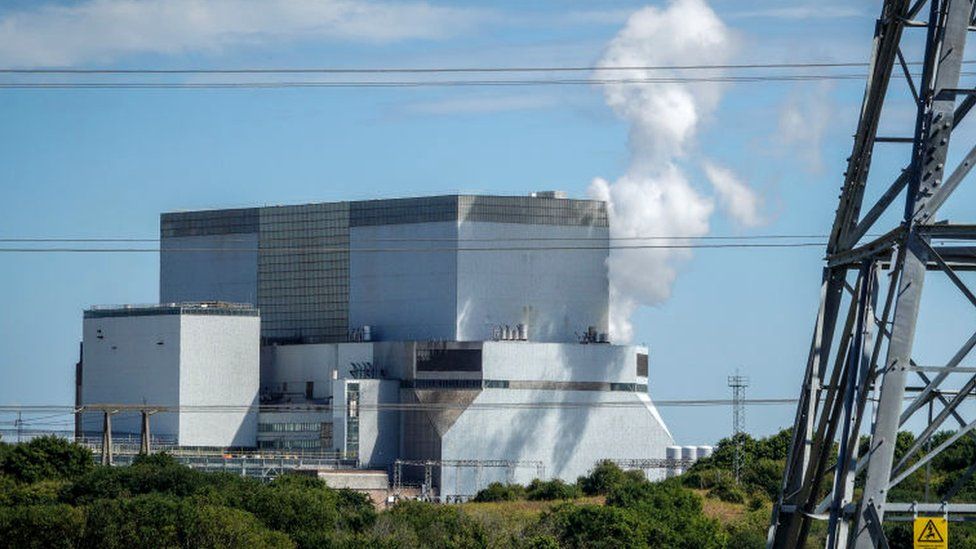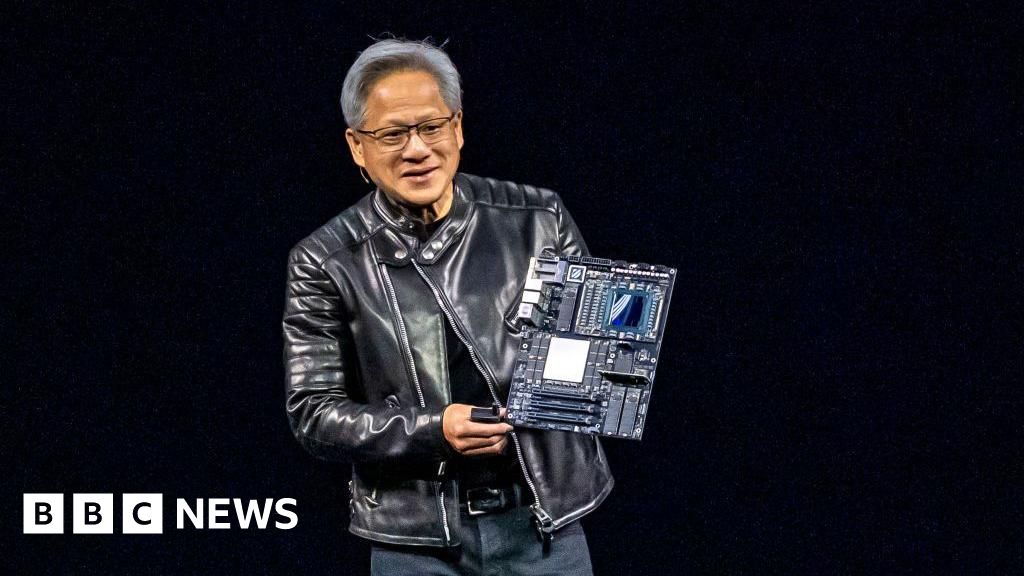ARTICLE AD BOX
 Image source, Getty Images
Image source, Getty Images
Hinkley Point B ceased operation in August 2022 after 46 years
By Theo Leggett
Business correspondent, BBC News
A dense forest of cranes, visible for miles around, marks the spot where the UK's first new nuclear plant in a generation is being built, at Hinkley Point in Somerset.
Once building is complete, it is expected to generate enough electricity to supply some six million homes, for the next 60 years.
But just a few hundred yards away stand two very visible reminders that the legacy of nuclear power stations remains long after they stop producing power.
The first of these, a vast, angular structure looming over the Bristol Channel, is Hinkley Point B. When it opened in 1976, its two advanced gas-cooled reactors (AGRs) were state of the art.
But over nearly half a century of generation, cracks developed in their graphite cores, creating potential safety concerns, and they were shut down for good last year.
Yet inside the cavernous main hall, little seems to have changed. Freshly painted machinery gleams under bright lights, as teams of workers in blue boiler suits scurry around above the reactors themselves.
The main activity at the moment is defueling: removing hundreds of fuel assemblies from deep within the reactor cores, stripping them down, and sending the wastes away for storage at Sellafield.
As we watch, a large steel tower is being positioned over the reactor. This is the charging machine. It looks rather like an old-fashioned helter-skelter, but in fact it is a heavily-shielded crane.
The fuel assemblies, having been in the reactor for years, are highly radioactive and need to be handled with extreme care.
Image source, EDF
Image caption,Dealing with potentially 'lethal' nuclear waste is an everyday task for EDF's Shaheed Mungur
"The machine is lifting the fuel assembly, which is highly irradiated and effectively is lethal when it comes to exposure," explains Shaheed Mungur, performance improvement manager at site owner EDF.
"But that's the reason why you have all of the shielding around it, and why we have to use this machine to handle the fuel in a safe way."
Once out of the reactor, the fuel assemblies are placed in a steel-lined cell for dismantling, where the used fuel itself is removed from its casings.
The work is carried out remotely by operators stationed in a cramped control room.
They have to peer through a 2m thick window, filled with a brownish radiation absorbing fluid, to carry out their tasks.
The fuel elements are then left in deep, clear ponds to cool, before being placed in rugged, 45-tonne containers for their journey to Sellafield, where they will be put into interim storage.
When operating, the two reactors at Hinkley Point B each contained 308 fuel assemblies. Removing them all is expected to take up to four years, and will cost around £1bn.
"End of generation is absolutely not the end of the station life," explains Director Mike Davies.
"We've been trusted for years to operate this plant safely. And during that time that of course included handling the nuclear fuel, and that's what we're doing now."
"We're taking the nuclear fuel out, and just not replacing it with new fuel."
Image source, EDF
Image caption,A worker remotely operates a heavily shielded crane (green machinery) above the reactor
Once defueling is complete, EDF will hand over the site to the Nuclear Decommissioning Authority (NDA).
To find out what happens then, it is worth going next door - to another power station, Hinkley Point A.
This was one of the UK's first-generation nuclear sites. Its two reactors were brought online in 1965 - and shut down for good in 2000.
Nearly a quarter of a century later, its two box-like reactor buildings still stand tall against the skyline. But other buildings, including the huge turbine hall, have been removed - leaving just a deep, weed-strewn hole in the ground.
Old fuel storage ponds have been drained, cleaned and painted to reduce radiation risks, although we are warned not to linger around them. But elsewhere a water-filled vault remains half-full of radioactive scrap, which is being painstakingly removed.
Image source, Magnox
Image caption,"Don't linger here" - a drained storage pond at Hinkley Point C
A new thick-walled concrete vault has been built on the site, to store intermediate-level radioactive wastes.
One of the biggest current challenges, however, involves a completely different type of industrial hazard.
In one of the old boiler houses, teams of labourers wearing respirators are painstakingly cleaning miles of intricate pipework, by hand - in order to remove traces of asbestos.
When the plant was built, large quantities of the material were used as insulation - and thousands of tonnes have already been removed.
Under current plans the bulk of the decommissioning work will be complete by 2039. But the reactor buildings themselves will be left standing, sealed up against the weather, for another 20-40 years.
"The site will be safe and secure", explains site director Kirandeep Basra-Steele. "The waste and the hazards will be buttoned down and safely stored."
This is known as the "care and maintenance" phase. Because radioactivity decays over time, the NDA believes it will be safer to wait before taking the reactor buildings apart.
With the final stage of decommissioning expected to take about a decade, It means the site will not be fully cleared until the 2070s at the earliest - 70 years after power generation ended.
Meanwhile the most dangerous waste products created by both Hinkley A and B over their lifetimes will need careful handling, potentially for generations to come.
Although nuclear plants have been operating commercially in the UK since 1956, there is still no permanent repository for high or intermediate level wastes - some of which will remain hazardous for thousands of years.
The government does plan to build a geological disposal facility (GDF), deep underground - but this will not be ready for several decades.
Critics of the nuclear industry say the decommissioning challenges of old plants, and the lack of a permanent solution for waste, mean it is wrong to build new ones.
"The big lesson that we should take from the difficulty of handling nuclear waste at the moment is that we shouldn't be creating any more of it," says Doug Parr, Chief Scientist at Greenpeace UK.
Nevertheless, construction of the new power station at Hinkley Point - Hinkley Point C - is pushing ahead. Generation is due to begin in four year's time.
But one day, it too will have to close, and a funded decommissioning plan - now a legal requirement - has already been drawn up.
If all goes to plan, the process will take about 20 years, meaning the remains of the plant won't be fully removed until well into the 22nd century.

 1 year ago
35
1 year ago
35








 English (US) ·
English (US) ·